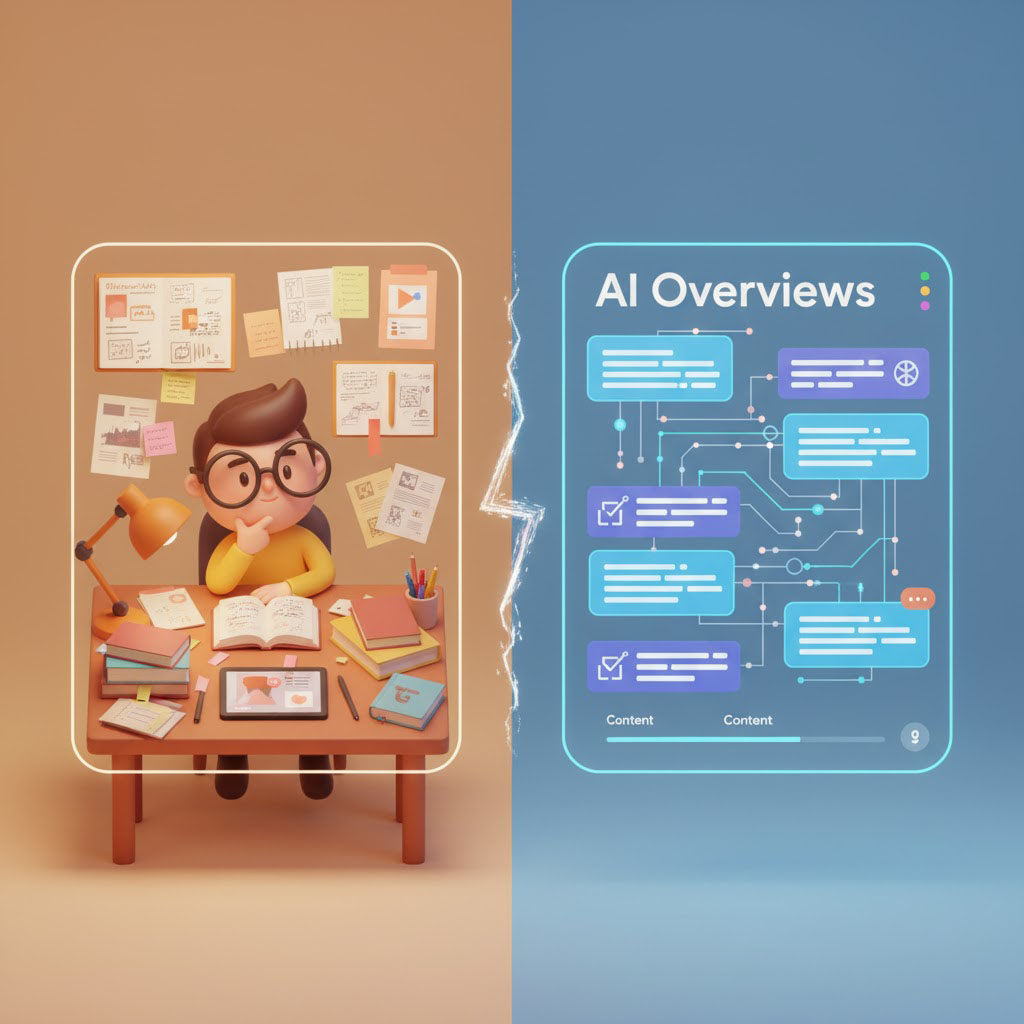Google’s pitch for AI Overviews is clean and compelling: we’re rewarding original, authoritative content while burying derivative slop. Great in theory. But here’s what’s actually happening: Google is trying to regulate content quality while remaining completely dependent on the very creators they’re regulating.
That contradiction is about to cause problems.

Google Needs You More Than You Need Google
Let’s start with what Google won’t say out loud. AI Overviews need source material. Good source material. If the entire internet becomes derivative garbage, Google’s AI has nothing meaningful to summarize. The whole product falls apart. So Google’s crusade against slop isn’t about justice or ethics. It’s survival. They’re protecting their own product pipeline by incentivizing the kind of content their systems can actually draw from.
That’s not malicious. It’s just honest. Google is optimizing for Google, not for creators or readers. The moment you understand that, everything else makes sense.
The problem is what happens next.
The Misflagging Problem That Nobody’s Talking About
Google’s algorithm is going to flag legitimate content as AI-generated slop. Not all of it. Not even most of it. But enough to matter.
Picture this: an individual creator uses AI to spin up a rough draft of an article. Then they spend 30 minutes fact-checking it, editing it, adding their own research, refining it into something actually good. Final editorial control. But somewhere in that process, Google’s detection flags it as “AI-generated” and buries it.
These creators aren’t lazy. They’re not trying to cheat the system. They’re using AI as a tool, the way writers use word processors & spellchecks & grammar checks, the way designers use Photoshop. The tool doesn’t make the work illegitimate. The judgment and craft do. But Google’s algorithm can’t see the difference between someone spending 30 minutes improving AI output and someone uploading AI slop wholesale.
So legitimate creators get caught in the collateral damage.
The Exploits Already Exist, You Just Won’t Hear About Them
Anyone predicting what bad actors will do with this update is already one step behind. The exploits have been found. The grey-hat tactics are being deployed right now. They’re just not public yet. Anyone who figures out how to make AI-generated content still look real to search engines is going to keep that quiet as long as possible. Why would they share the hand that feeds them?
The hidden exploits will stay hidden until they become so mainstream that people pick up on them. By then, Google will release another update. And the cycle continues.
Just Another Flavor of the Same Problem
This is not a watershed moment for content creators. It’s another Google algorithm update. Every major Google update comes with predictions of doom and gloom. This one will kill the industry. That one will end SEO forever. The industry doesn’t die. It just evolves and shrinks. Consolidates. Becomes less viable for the middle class of creators who aren’t massive publications and aren’t tiny niche operations.
Different flavor. Same problem.
What Would Actually Help
If Google really cared about content creators, AI Overviews would look like this: show a partial answer. Enough that readers know it’s the right solution. Then direct them to the source. Put a clear link to the article, the website, and the creator. Send them traffic. Help them pay bills through whatever their business model is: ads, subscriptions, sales, or sponsorships.
AI Overviews could actually drive revenue to creators instead of cannibalizing their traffic. The technology makes it possible. Google’s current approach doesn’t do this. It summarizes, extracts the value, and keeps users in the Google ecosystem.
That’s the real issue. Not that Google wants quality content. It’s that Google wants quality content they can abstract away from, not quality content they have to send traffic back to.
Until that changes, every update is just another way of saying: we need you, but we’re going to extract as much value from you as possible while pretending we’re helping.